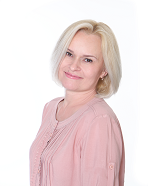Treatment of myositis of the cervical muscles - information for patients
Myositis is inflammation of one or more skeletal muscles. It can be an independent disease or a consequence of another pathology. The mild form passes on its own within 7-10 days. Treatment of myositis of the neck muscles requires qualified assistance and a short recovery period. Injuries, infections, worm infestations, body intoxication, heredity and the influence of adverse external factors are the main causes of pathology.
Types of disease:
- myositis of the back (pain appears in the morning hours);
- myositis of the legs and hands (pathology, as a rule, is a consequence of polymyositis);
- myositis of the neck (pain intensity increases when turning the head and bending over);
- myositis of the chest (pathological inflammation that quickly spreads to the muscles of the pharynx and larynx. Treatment of myositis of the chest in children requires strict adherence to the recommendations of a specialist);
- myositis of the eye muscles;
- polymyositis (the main cause of the disease is infection);
- neuromyositis (the inflammatory process spreads not only to muscles, but also to nerves);
- myofasciitis myositis (occurs after an injury);
- lumbar (pathology is manifested by aching pain, which increases when pressing on the lower back).
There is a distinction between acute and chronic myositis.
Symptoms of back muscle myositis
The general symptom of pathology is pain, swelling and redness of the skin. As a rule, pain increases during movement. When palpating the muscles, nodules and painful pulls are felt. Patients complain of headache, weakness and general malaise. Myositis is often accompanied by fever. Among the symptoms of myositis of the back muscles is aching pain that limits movement.
Without timely treatment, the disease can progress, spreading to new muscle groups.
Ossifying myositis of the hip
The main cause of pathology is injuries. According to doctors, ossifying hip myositis is a professional disease of musicians, drivers and athletes. Among the main manifestations is a stifling pain in the thigh and buttocks, which increases with palpation and movement. This form of myositis requires immediate treatment and long-term rehabilitation. In complex cases, therapy is carried out in the hospital's surgical department.
Diagnostics
When making a diagnosis, it is important to differentiate myositis from osteochondrosis. For this purpose, X-ray and electromyography are prescribed. After examining the patient and taking an anamnesis, the specialist will find out whether the mobility of the vertebrae is preserved and whether they have degenerative lesions. In myositis, increased activity of muscle enzymes is detected in the blood, as well as the presence of specific antibodies.
On our website Dobrobut.com, you can book a consultation with the right specialist. At a personal appointment, the doctor will answer questions and talk about how to treat myositis of the neck muscles.
Treatment
Treatment should be started at the first signs of the disease. Timely therapy will help to avoid many complications. Treatment tactics depend on the etiology of the disease. The basis of drug therapy is painkillers and non-steroidal anti-inflammatory drugs (diclofenac, ortofen, voltaren). In case of infectious myositis, antibiotics are used, in case of purulent – abscess opening with subsequent drainage. Heart, vasodilator drugs, immunostimulants and vitamins are prescribed individually.
Physiotherapeutic procedures are recommended during the rehabilitation period. Electropharesis, UHF, dynamic currents and amplipulse will be effective. Physiotherapy is usually prescribed in combination with massage.
Prevention
An active lifestyle, rational nutrition, timely treatment of infectious diseases and vigorous physical activity will help to avoid such an unpleasant disease.
If you have any questions, make an appointment with our specialist and find out what to do with leg pain caused by calf muscle myositis. If necessary, you can undergo diagnostics at the clinic.
Related services:
Physical therapy (PE)
Massage



















